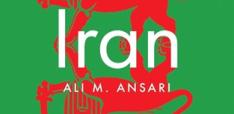Vulnerable Communities in Semi-Arid Lands need Adaptation Support to Unlock Sustainable Development Potential

Florence Crick, Kate Gannon and Estelle Rouhaud highlight the need to support private sector adaption in semi-arid lands or risk missing opportunities for development.
Around a billion people, including some of the world’s poorest and least food secure, live in semi-arid lands (SALs). Rainfall is already scarce and unreliable in these ‘climate hotspots’ and the frequency and severity of extreme weather events is projected to increase due to climate change. Combined with the high levels of poverty and lack of development in these regions, this means that the vulnerability of these populations is likely to get worse over the next decades.
Under the Paris Agreement national governments are already committed to supporting vulnerable populations to manage the impacts of climate change – impacts which will fall disproportionately on them. But supporting communities in semi-arid lands to adapt will not only buffer them against climate change impacts but also drive economic development in these regions and help achieve the ‘leave no one behind’ agenda, a key pledge of the 2030 Sustainable Development Agenda.
Small businesses dominate the private sector in Africa
In Africa small businesses dominate the private sector which generates two-thirds of the continent’s investment, 75 per cent of its economic output and 90 per cent of its formal and informal employment.
The ability of small businesses in semi-arid lands to adapt to climate change–and grow in spite of it–is therefore crucial for sustainable economic development. However, their potential can only be realized if adaptation and development are supported together.
Households, producers and businesses in semi-arid lands already manage their exposure to climate change by, for instance, diversifying their agricultural crops, their herds and supply chains, or migrating.
But some adaptation strategies are not sustainable or sufficient to buffer small businesses and households against current or future shocks and stresses. And some, such as the distress sale of assets at low prices to limit the risk of loss and damage, reduce their ability to cope with extreme climate events in the future.
Small businesses are vital to building climate-resilient development
The central role of businesses, including informally run businesses, in providing livelihoods and making adaptation decisions which have the potential to enhance resilience in their communities means they must be at the core of climate-resilient development in these regions. But research has shown that those that are hardest hit by climate impacts are often least able to absorb and recover from shocks and are more likely to implement unsustainable adaptation measures.
New research, published by the Pathways to Resilience in Semi-arid Economies (PRISE) research project, argues that to meet the Paris Agreement and SDG goals to support adaptation in vulnerable communities and ‘leave no one behind’, governments and their development partners need to rapidly upscale support for private adaptation in SALs.
But they cannot do this effectively alone. To unlock their potential, businesses need supportive enabling conditions and policies that equip them with the necessary incentives, resources, knowledge and skills, new PRISE research shows.
Access to finance is a particular barrier to adaptation in SALs. Informal enterprises which dominate the private sector in SALs, and those with restricted access to land ownership–including women and producers using communally owned land–struggle to access credit. Even among formal enterprises, climate and business development finance is often not available for small and medium enterprises, which find it hard to access banks loans, but are not eligible for existing initiatives for micro sized businesses.
The importance of climate information, infrastructure and enabling policies
However, finance alone is not enough. Businesses also need access to climate information and early warning signals; access to climate resilient transport, water, and electricity and communication infrastructure; and policies which account for the flexible, mobile and informal nature of livelihoods in semi-arid lands.
What’s more this support must be inclusive. Informal enterprises, women’s groups and producers’ cooperatives include some of the most vulnerable businesses and livelihoods but have been largely excluded from government interventions and support services to date. For instance, small household-run businesses managed by women are particularly poorly supported. Their limited access to land, finance, educational opportunities and other assets means that women’s livelihoods are doubly vulnerable to climate risks. National governments and their development partners must implement policies which include support for these groups.
The twin goals of adaptation and development
Crucially, it is clear that to enable sustainable economic development in semi-arid lands policy-makers can no longer afford to treat adaptation and development separately. Currently national governments rarely address the adaptation needs of the private sector in plans for economic development and National Adaptation Plans rarely consider the types of businesses which provide employment in semi-arid lands.
A more joined up approach is needed between policy-makers planning for adaptation and those planning for development. There is an opportunity now to support businesses in driving climate resilient development among some of the world’s poorest and most vulnerable communities. To miss this opportunity risks leaving these regions increasingly vulnerable to the risks of climate change.
Florence Crick and Kate Gannon are Research Officers at the Grantham Research Institute on Climate Change and the Environment, LSE and Estelle Rouhaud is Research Project Manager at the Grantham Research Institute on Climate Change and the Environment, LSE.
Follow the Grantham Research Institute on Twitter: @GRI_LSE.
The Pathways to Resilience in Semi-Arid Lands (PRISE) research project is a five-year research project that focuses on semi-arid regions in Senegal, Burkina Faso, Kenya, Tanzania, Pakistan, Tajikistan and Kyrgyzstan.
This post is not released under a creative commons license. Please contact us for permission to republish.
Image credit: alisamii via Flickr (CC BY 2.0)


